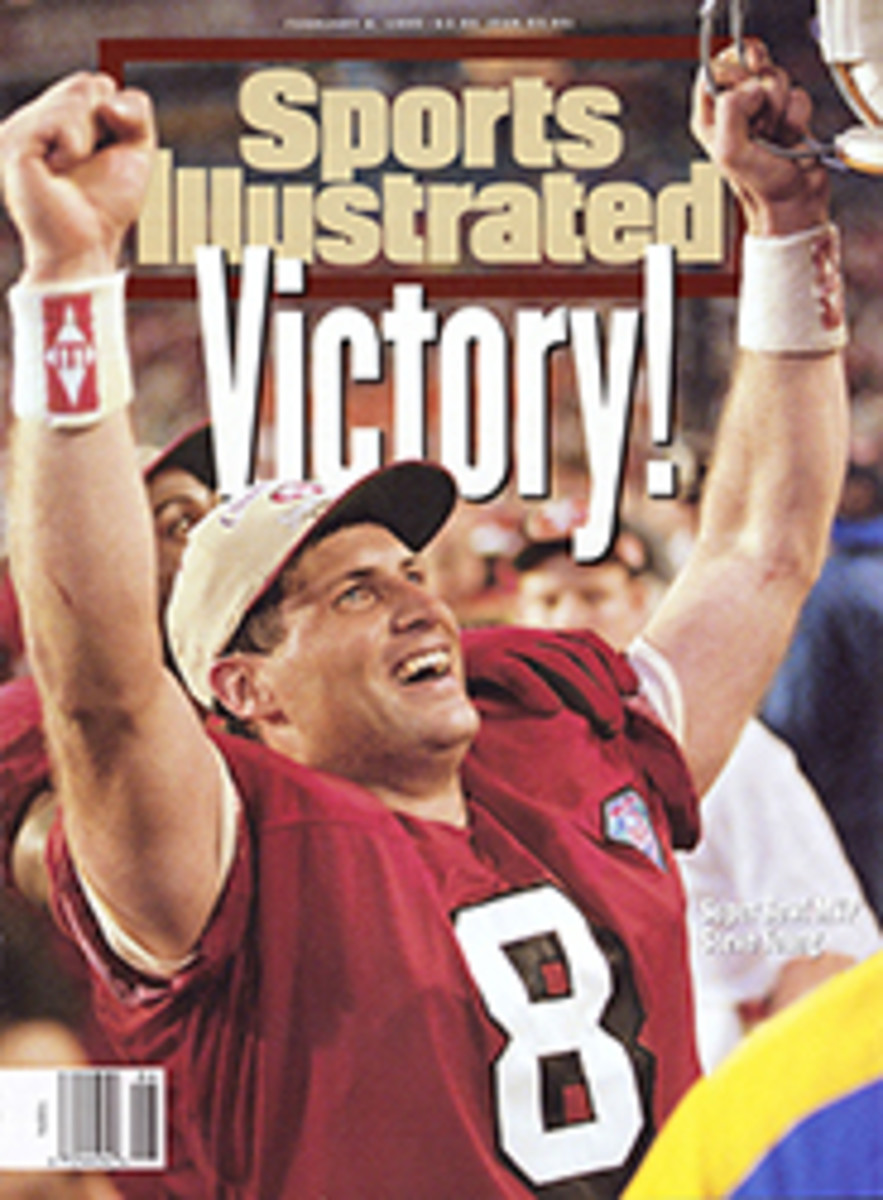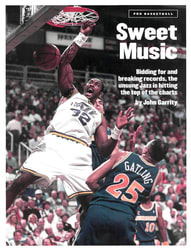
It's a Babe-o-nanza!
Babe Ruth, still dead after all these years, is nonetheless having a remarkable season. In corporate America, that is. Thanks to an aggressive marketing campaign tied to Ruth's 100th birthday, on Feb. 6, we are being treated to a retail Babe-o-Rama.
There are images of the Bambino on plates and beer steins, stamps and coins, watches and wall clocks, telephone debit cards and bottles of nonalcoholic wine, magnets and computer mouse pads. And don't forget the obligatory baseball trading cards, T-shirts and caps, crystal and, of course, a talking picture frame.
Almost 100 "official" Ruth products are available. Each for a price. Each adorned with a special 100th-anniversary logo denoting "brand" status. Some of the items even carry the Sultan of Swat's "exclusive replica signature."
But a talking frame? Tempered glass covers a picture of Ruth completing his mighty swing. A button starts the muffled audio, which offers a radio replay of Ruth's legendary "called" home run in the 1932 World Series. The frame sells for $129.95.
Though Michael Jordan, Shaquille O'Neal and Joe Montana are not about to disappear from the marketing landscape, the stars of yesteryear are proving to be valuable players in both advertising and the sale of sports memorabilia. And an Indianapolis firm called Curtis Management Group, which represents the families and estates of Ruth and 51 other late great sports figures, is leading the way.
Curtis was founded in 1981 to protect and promote the names and images of dead artists and entertainers, people such as Norman Rockwell, Elvis Presley (no longer a client). James Dean and Buddy Holly. Its list of nonsports clients (Humphrey Bogart, Greta Garbo and Malcolm X. to name a few) has grown remarkably.
But sports figures—once an afterthought—now account for some 45% of a thriving business that employs 35 people. How impressive is Curtis's roster of clients? The New York Times Greatest Sports Legends has profiles of 50 of this century's greatest athletes; Curtis handles contracts for 26 of them, including Ruth. Lou Gehrig. Honus Wagner, Ty Cobb, Cy Young, Casey Stengel, Shoeless Joe Jackson, Vince Lombardi, Jim Thorpe, Jesse Owens, Joe Louis and Jack Dempsey.
Ruth, who died in 1948, is once again knocking out the biggest hits. And the greatest number. He has appeared in a variety of advertising and marketing campaigns—for Chevrolet, Coca-Cola, McDonald's, Hallmark. Zenith. Sears and others—and. of course, has made the mandatory appearance on Wheaties boxes. And this year, as Curtis pushes the birthday angle to entice licensees, Ruth products are expected to bring in more than $25 million in retail sales, with royalties and licensing fees alone running "well into seven figures," according to Mark Roesler, president of Curtis.
"Oh, my," says Julia Ruth Stevens, the 77-year-old daughter of the Babe and a principal beneficiary of this windfall. "Daddy would be amazed. And so proud. He did very well when he was alive, but now he is generating more money than when he was playing ball."
It is no wonder, then, that Roesler, a 39-year-old lawyer, speaks of Ruth and other late athletes in such exalted terms. While the rest of us are comfortable thinking of dead athletes as merely, well, dead athletes, Roesler prefers to call them "legends past" and "images of excellence for all seasons."
There is at least one major advantage to an "endorsement" or commercial "appearance" by a dead athlete rather than a live one: There is no danger that the deal will be sullied by, say, a labor stoppage or a drug bust.
"They're not going to be in the headlines for the wrong reasons," Roesler says of athletes who are out of action—permanently. "You can count on them."
It was in 1984 that Curtis made its move—albeit tentatively—into sports. "There's a big difference between entertainment and sports," Roesler says. "With entertainment figures, we knew we had potential throughout the world. With sports, we would be limited primarily to the U.S. I thought there was a need to protect the names and images of sports figures from unauthorized use. The question was: Could we make more money than we spent doing that?"
The way Roesler saw it, Ruth is among the greatest sports legends of all, so Curtis began a computer search to locate the Babe's surviving relatives. He found two daughters, Dorothy Pirone (who has since died) and Stevens, and arranged to meet with them in Florida.
"No one had ever approached either one of us with anything like this," says Stevens, who was living comfortably but modestly on Social Security payments and her father's estate. "I said, 'Well, it all sounds very nice,' but I really didn't think that much about it."
Until the checks started arriving in 1985. "A real gift from heaven," Stevens says. "It started out around $5,000 the first year. And it went up steadily, up to six figures two years ago. If you want to include the first few years, which were much slower, I would say it has probably averaged between $50,000 and $75,000 a year. Just my part."
After Curtis takes its cut—60% or so—the Ruth income is divided three ways among Stevens, her late sister's five children and the Babe Ruth Baseball League Inc., a youth baseball program.
Roesler sees the day—not far off, he says—when the blending of old footage and new scenes will create an entire genre of commercials in which his sports legends appear to be interacting with contemporary actors. Such a commercial has already been made for Diet Coke with film footage of Bogart, who seems to be mingling with a 1990s crowd.
Most of sports marketing still hangs on the here and now, but it appears that the throwbacks have also claimed a permanent niche. "Everybody wants the new guys to be more like the old guys," says John Stote III, vice president of Anaconda Sports, a large sporting-goods distributor that has its own memorabilia division and is a Ruth licensee. "They used to play baseball just to play baseball. Now it's all lawyers, the portable phones in the dugout, some guy making three million a year who can't play because he has a little tape wrapped around his pinkie."
Cobb, Gehrig, Lombardi, Owens and Thorpe (not necessarily in that order) follow Ruth as the most profitable dead sports clients, Roesler says. But he and family members of the late greats emphasize that income is not their only interest. Equally important, they say, is maintaining control of the departed's name and image. Curtis provides legal assistance to protect against unauthorized use of these, and before any deal involving a dead athlete is made, the company usually seeks input from surviving relatives.
"There is some remuneration," says James Cobb, 73, son of Ty, "but that's not the idea with me. The important thing is that people go according to the law: no using the Ty Cobb name for advertising or" selling something without permission."
Cobb says he was thankful to Curtis for enabling him to inspect a small statue of his father before it was reproduced for sale. He thought the ears were sticking out too much—a problem that Curtis had fixed. "But I still don't know if they sold any or not," Cobb says. "I think they were charging too much."
On its client list Curtis tactfully distinguishes the living from the dead with an asterisk meaning "available for personal appearance bookings." Jim Taylor, for example, gets an asterisk. Bronko Nagurski does not.
But wait. Ruth has no asterisk, yet we are told he is available for appearances. In fact, he has already been out on the road. Posing for pictures. Signing autographs. Is it possible?
No, of course not. Even slick marketing could not deliver the real Ruth for an encore performance. But Ruth lookalike Willis (Buster) Gardner, a.k.a. Buster the Babe, is fully licensed and ready to go. The 57-year-old mechanic and tow-truck operator from Oberlin, Ohio, proves that almost anyone can get in on the act.
Buster the Babe, who charges $500 a day plus expenses, is hoping his sideline work will eventually provide him with a comfortable retirement. If nothing else, the 100th-anniversary year should give him plenty of practice.
And he ought to keep an eye on the calendar. The real Ruth died in 1948, which means that 1998 will mark the 50th anniversary of his death. Yet another grand opportunity for the creative team that is transforming the Sultan of Swat into the Legend of Licensing.
Jeffrey Marx, who lives in Washington, D.C., has written several stories for Sports Illustrated.
PHOTO
BEN LAWRENCE
Roesler's company is behind the Ruth licensing agreements and his heirs' newfound fortunes.
PHOTO
ROE PHOTOGRAPHY
A heavier twin of the man on the cereal box below, Gardner is a "living"—no asterisk—star.
PHOTO
COURTESY OF CURTIS MANAGEMENT
[See caption above.]

